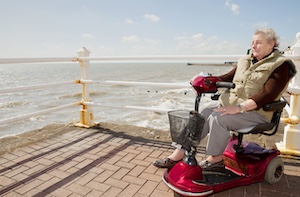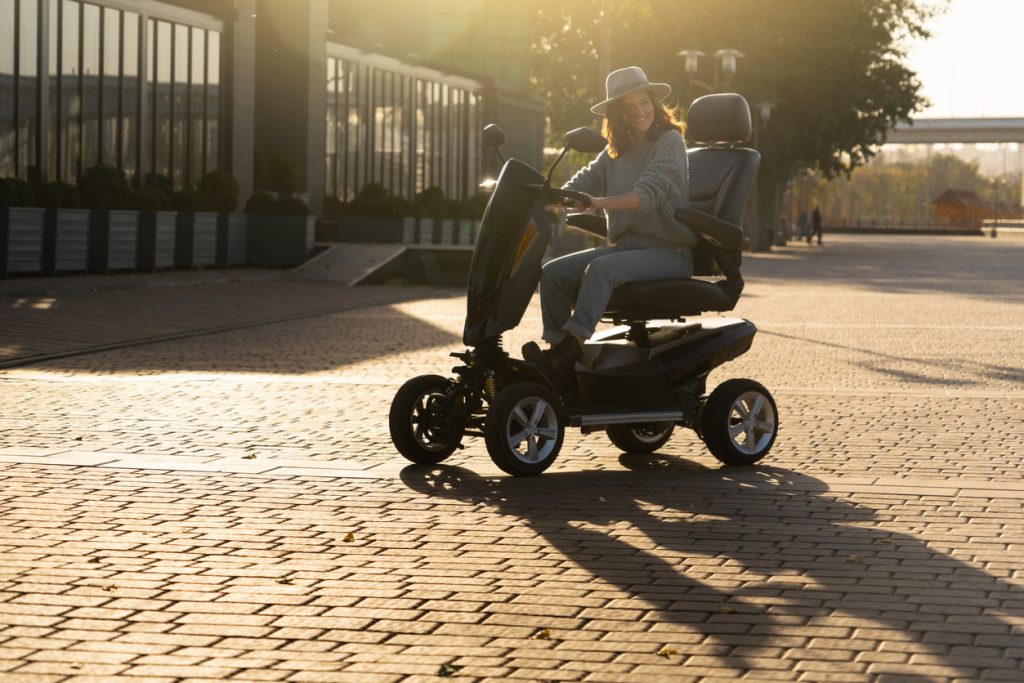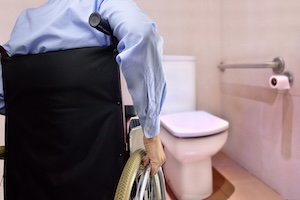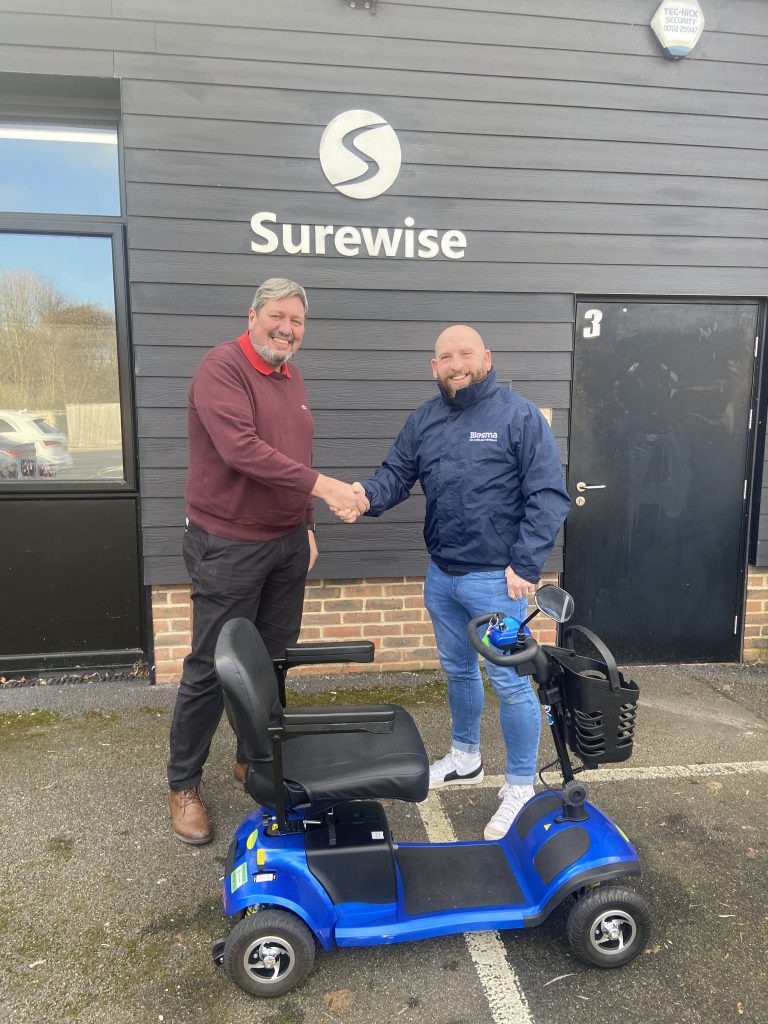Wheelchairs are much more than a vehicle to get people with mobility issues and disabilities from A to B; they are a lifeline to more independence. They allow users to maintain their freedom and go about their daily tasks in more comfort. As time goes on, users begin to feel in tune with their wheelchairs. But like any relationship, this takes time to develop. There can be a period of adjustment at the start, where the user can feel uncomfortable and uncoordinated.
These tips will help you minimise the discomfort of this bedding-in period, and get the relationship off on a positive footing as soon as possible.
Proper Fitting
Knowing how to fit your wheelchair to the contours of your body should be among your first priorities when you get a new wheelchair. Research shows that 80%-90% of wheelchair users are actually in chairs ill-fitted to their needs. In part, this is because your body and needs will naturally change over time, while the chair stays the same.
A simple adjustment here makes all the difference and saves unnecessary discomfort. Even minor tweaks can make all the difference in preventing a host of conditions, such as problems with posture, blood clots, and pressure abrasions.
Getting a professional wheelchair provider to help you with this process is one of the best ways to ensure your wheelchair fits the proportions of your body correctly long-term.
Pressure Release
In any wheelchair, it is the pelvic area carrying most of the user’s weight, so it must be aligned correctly to bear the load. The user should feel comfortable and supported. Pressure dispersion cushions can help here, spreading the pressure evenly across the bottom and the back. This pressure should be relieved sporadically, too- reclining being a good way to do it.
If you use the seat and back of the chair to position yourself properly, you can allow yourself better upper body control. This will align your hips and spine so there is no unnecessary pressure on the coccyx or ischial bones (which can cause discomfort and even ulcers on your bottom!)
With a large portion of the day spent in the chair, a quality headrest can be a sound investment.
6 Measurements
According to advice from the Christopher & Dana Reeve Foundation, there are six measurements to focus on when fitting your new wheelchair:
- Seat Width: Your seat should be wide enough to avoid pressure on your hips (and the risk of pressure ulcers), but narrow enough to allow easy access to the wheels if the chair is self-propelling.
- Seat Depth: You need a minimum of two inches depth to prevent blood vessel constriction and the formation of blood clots- so the edge of the seat should be two inches from the back of your knees.
- Seat Height: This will depend on your height and also whether your feet will be on footrests or will be needed to help you move the chair. If using rests, your seat will need to be higher to clear the floor and any obstructions.
- Footrest Length: Too long can leave your legs dangling; too short, and they will push your thighs up. Calf supports are useful in stopping your feet from sliding off the rests when you recline.
- Armrest Height: This is very much a question of what feels comfortable for you, personally. People who are moving themselves in and out of the chair often may find they get in the way and not want them at all. However, they can provide useful support for tired arms. Ensure these are positioned at the correct height to avoid and alleviate tension in the shoulders.
- Back Height: Your particular disability will determine the best height for the back of the chair. For example, those with lower back injuries often find chairs with a lower back more comfortable; those with upper back injuries may prefer the support of a full-length back and headrest.
Visual Checklist
First, in the chair, have a look at your body position in a full-length mirror and ask:
- Is your body even, or leaning to one side?
- Are you leaning forwards or backwards?
- Are your shoulders straight or drooping?
- Are your legs even?
If your posture doesn’t look right or you don’t feel comfortable, you may need to adjust (or even replace) your chair. Other adjustment options include:
- Extra lumbar support
- More cushioned armrests
- Lateral side supports
- Custom seating for special needs, such as Vector Vicair Wheelchair Cushion
One last tip is to avoid bulky clothing when in the chair- too much fabric can really affect your balance and your comfort in the chair. In colder conditions, look for warmer clothing made from thinner fabrics, where possible.
Adjusting Your Home to Your Wheelchair
A new wheelchair will require some modifications to your home to accommodate it. Here are a few things you might want to consider to help manoeuvring around that little bit less cumbersome.
- Ramps (and handrails)
- An automatic or remote-control door-opening system
- Bathroom adaptation– ie. walk-in shower, wet room, electric bath lift, wash-and-dry toilet, grab rails, sliding doors
- Stairlifts (if you don’t live on one level)
- Widened doorways
- Lowered kitchen worktops
- Lowered light switches
- Wheelchair-level power sockets
- Wooden floor instead of carpets
- Security- ie. outside lights and intercom system
These modifications don’t always come cheap. However, there are some government grants available to help with the costs. You can find out more about disabled facilities grants on the gov.uk website.
Using Your Wheelchair Out of the House
There are a few tips to bear in mind if you are a new wheelchair user, still unaccustomed to the challenges it can present when you leave the house.
- Stay on flat surfaces as much as possible (gradients of 20% or less).
- Be careful with off-road surfaces like grass and gravel etc, unless you have an all-terrain wheelchair. Clean your tires as soon as you cross the surface.
- Avoid sandy areas- they can build up on the tires and affect the chairs balance.
- Be aware of the weather- any kind of rain or snow can make surfaces slick and more dangerous.
- Take precautions going up or down on ramps- ensure they aren’t obstructed by debris, and lean forward for momentum on the way up.
Using Your Wheelchair on Public Transport
Although steps have been taken to ensure public transport is more accessible for people with mobility issues, it can still be tricky. With a little planning, you can give yourself the best chance of a smooth journey.
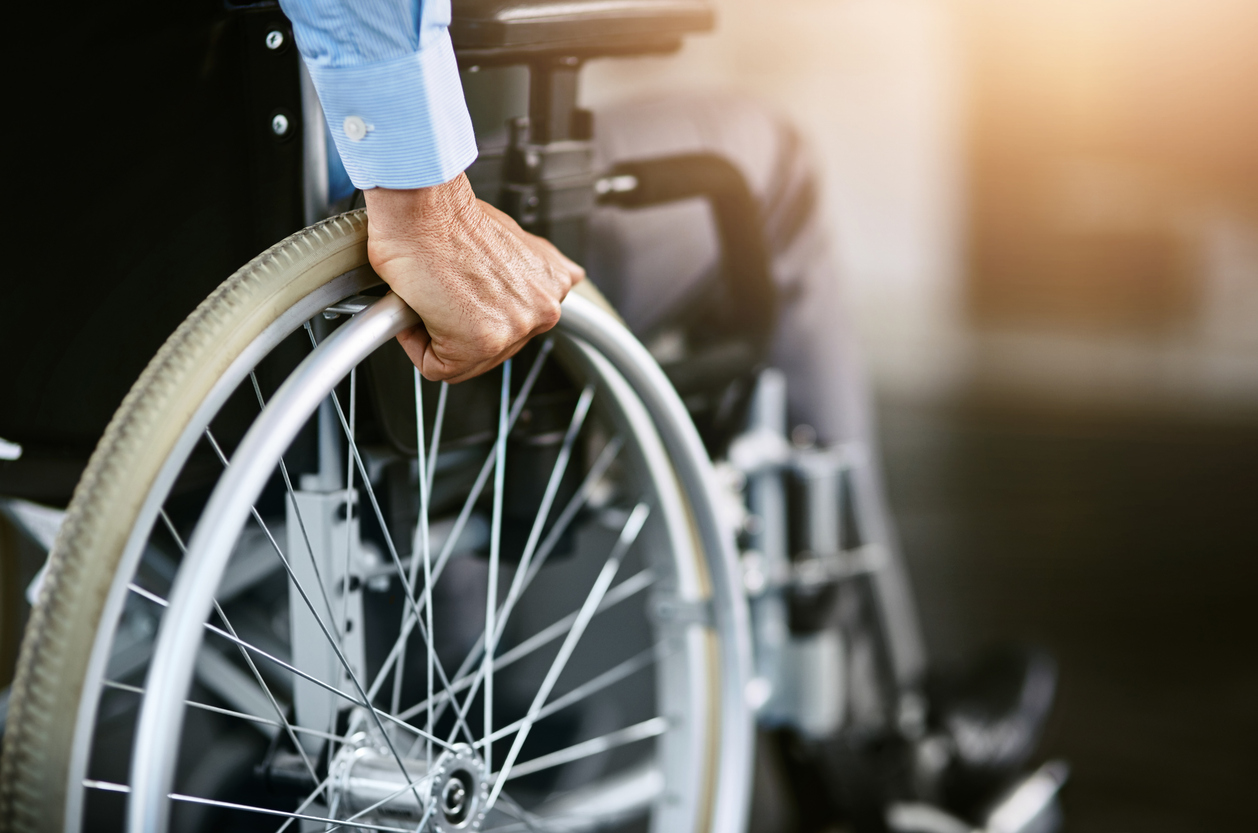
Always Check Before You Leave
- Is there step-free access?
- Where are the wheelchair spaces?
- What kind of assistance is available getting on and off?
- Are there lifts and ramps at the station?
Your first few times on public transport can be nerve-wracking and stressful at times, especially if you are on your own, but it gets easier over time as your confidence grows. Don’t be afraid to speak up if you need assistance or feel that your needs are being adequately facilitated – you have as much of a right to travel on public transport as anybody else.
Here are a few more tips that might make your journey that bit smoother:Book first (and make contact if necessary)
Book Your Journey
Making bookings before your journey can be helpful. Most trains give you the option and it will guarantee your seat too. If you let service operators know ahead of time where you will be getting on and leaving they can have a ramp ready for you.
Take Advantage of Discounts
Discounts incentivise the use of public transport over taxis and driving. The Disable Persons Railcard only costs £20 and gets you a third off rail prices. It also has a range of other perks, like discounts in hotels and restaurants! Check your eligibility for a Disabled Persons Railcard here.
It’s not always easy, especially when you are on your own, but it can be a big help in ensuring your journey runs smoothly. Staff are trained to help but the general public is usually happy to help too.
We hope you’ve found these tips useful and they have you feeling comfortable in your new chair, right from the start!

